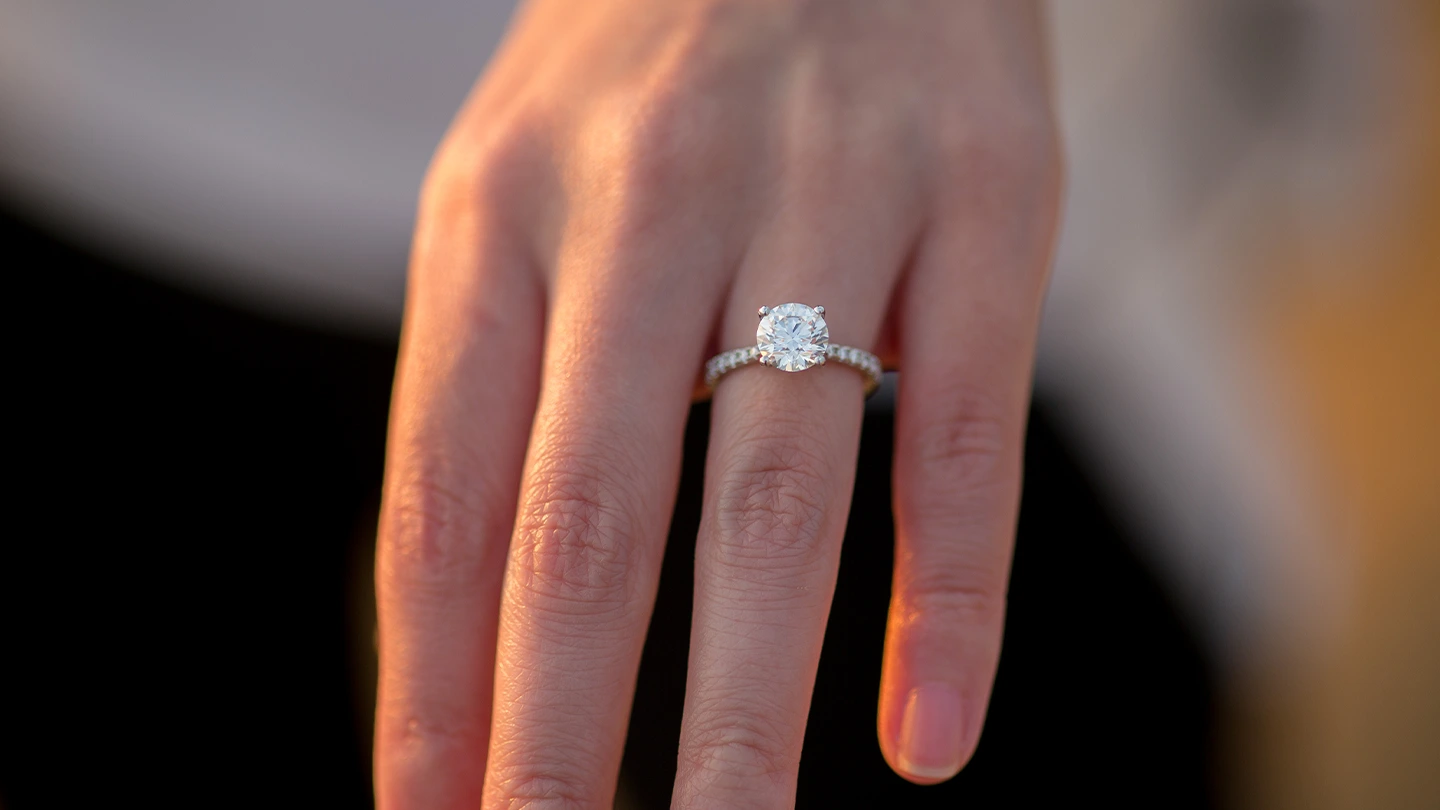If you’re looking for a round diamond, the round brilliant cut is one of the most popular styles for engagement rings. It’s flattering on the finger, it captivates with its sparkle, and it’s a contemporary classic. Here’s what you need to know when choosing a round brilliant or round cut diamond for your engagement ring.
- What is a Round Brilliant Cut Diamond?
- History of Round Diamonds
- Why are Round Brilliant Cut Diamonds in Demand?
- What to Look for in Round Brilliant Cut Diamonds?
- What is the Best Color Rating to Choose for a Round Brilliant Cut Diamond?
- What is the Best Cut Rating to Choose for a Round Brilliant Cut Diamond?
- What is the Best Clarity Rating to Choose for a Round Brilliant Cut Diamond?
- What Carat Weight is Recommended for Round Brilliant Cut Diamonds?
- Types of Metal Options for Your Round Diamond Engagement Ring
- Best Engagement Ring Setting Styles for Round Diamonds
What is a Round Brilliant Cut Diamond?
Round brilliant cut diamonds are popular for engagement rings due to their incredible sparkle and universally flattering shape. Round brilliant cut diamonds have a symmetrical round girdle, or outline, when viewed from the top, and consist of 57 or 58 triangular and kite-shaped facets, and a large table facet.
The table facet—usually the largest facet on the diamond—helps gather light from above and directs it into the diamond’s interior before reflecting it back to the observer. The crown facets, consisting of 8 bezels, 8 stars, and 16 upper halves, gather and disperse light to create brightness, fire, and a scintillating light and dark pattern. The pavilion facets, consisting of 16 lower halves, 8 mains, and an optional culet, reflect the light back through the crown to the viewer’s eye.
All of these facets work together to create the round brilliant diamond’s unique appearance, and the brightness, fire, and scintillation this cut is known for.
These diamonds are sometimes referred to by their acronym, RBC (Round Brilliant Cut).
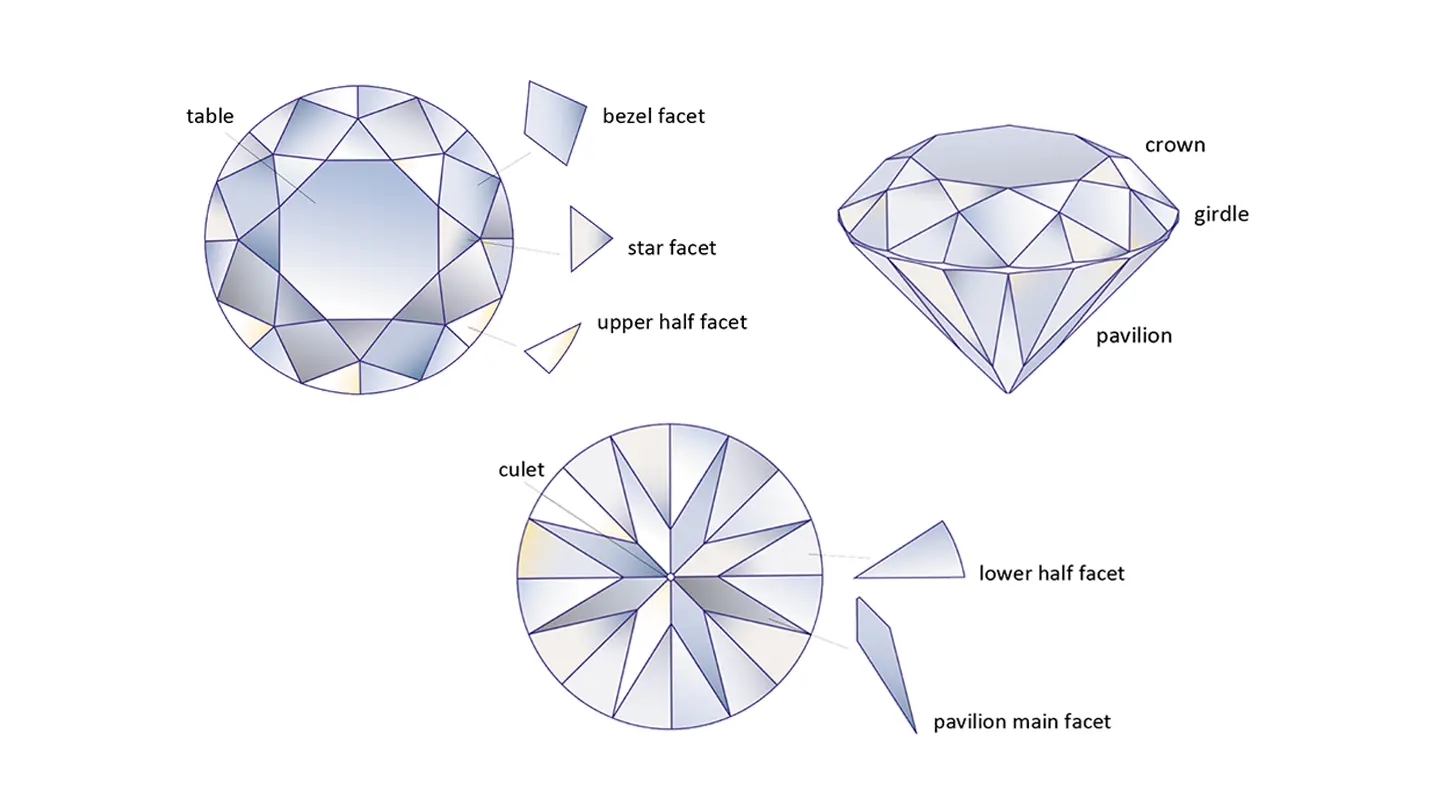
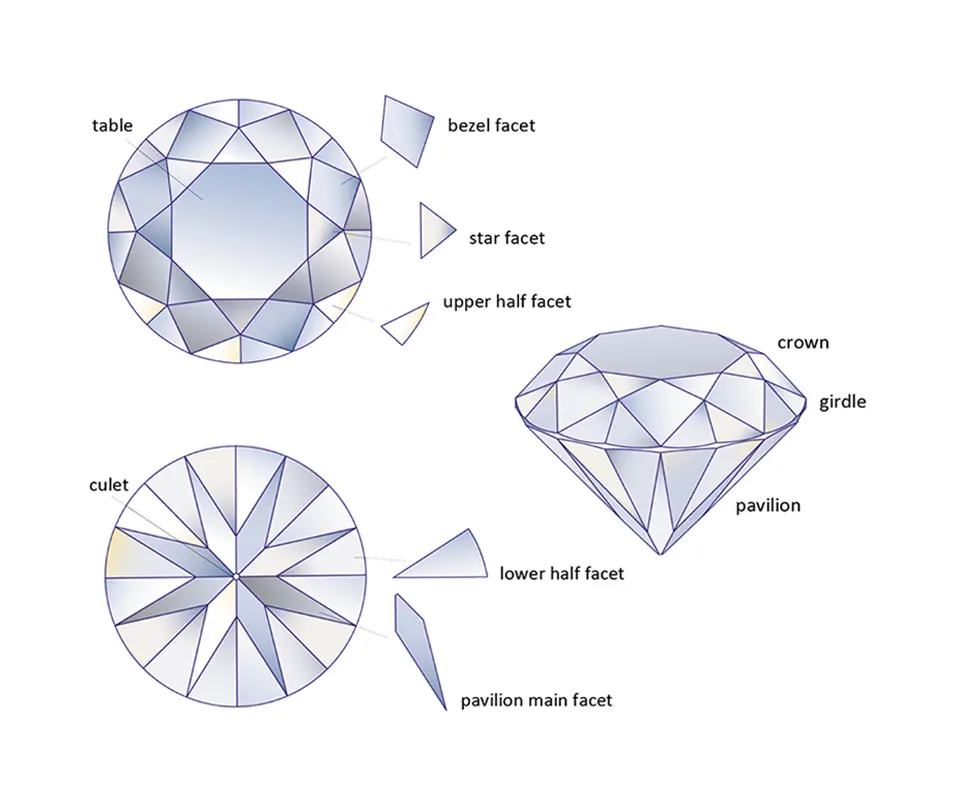
History of Round Diamonds
Although round diamonds predate 1750, it was the invention of the bruting machine in 1873 that made it easier to produce them with a pleasing, symmetrical outline. This mechanical marvel, invented by Boston diamond cutter Henry Morse, let diamond cutters produce very round diamonds instead of following the shape of the original crystal, which most often yielded a square or rectangular cushion-shaped diamond.
Morse also invented the first gauge to measure the angles of diamonds. He experimented with the proportions of the round diamond, such as small table facets and steep pavilion angles, which created more fire but less sparkle. In doing so, Morse developed a cutting style known as the American cut, the forerunner of the modern round brilliant cutting style.
Today, round brilliant cut diamonds are fashioned using high-tech automatic-cutting equipment, which cuts diamonds to exact standards using time-tested diamond proportions.
Why are Round Brilliant Cut Diamonds in Demand?
The RBC is the most popular type of round diamond and accounts for nearly one-third of all diamonds sold for engagement rings, according to The Knot.
Here are some reasons for its enduring popularity:
Brilliance: Round brilliant diamonds are known for their incredible brilliance, which is the amount of white light that is reflected by the diamond back into your eye.
Fire: A well-cut round brilliant also gives off plenty of fire, which is the rainbow flashes of color you see when a diamond breaks up white light into a spectrum of colors.
Hides inclusions and color: The round brilliant’s large number of facets and incredible brilliance can hide some inclusions and yellow or brown color, more so than step-cut diamonds.
Versatile appearance: Round brilliant diamonds are suited for both elegant vintage and sleek modern designs. It’s a classic that can be worn as a solitaire, as part of a three-stone ring, or with halos or pavé settings.
What to Look for in Round Brilliant Cut Diamonds
When purchasing a round brilliant cut diamond, the most important thing to look out for is its cut grade. Only buy diamonds with Excellent or Very Good cut, because cut determines a diamond’s brightness, fire and scintillation.
Some connoisseurs look for “triple x diamonds” which are diamonds with Excellent cut, symmetry and polish.
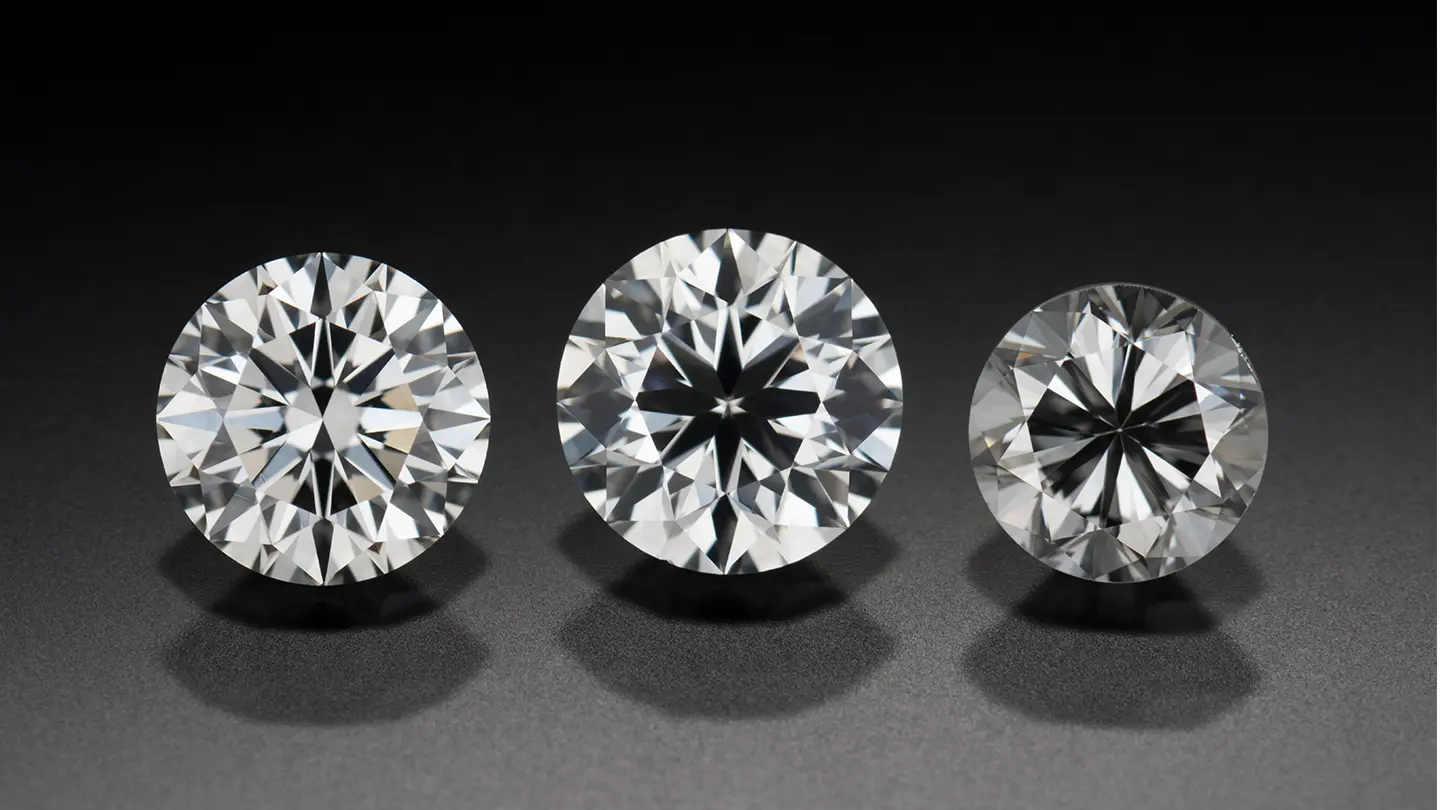
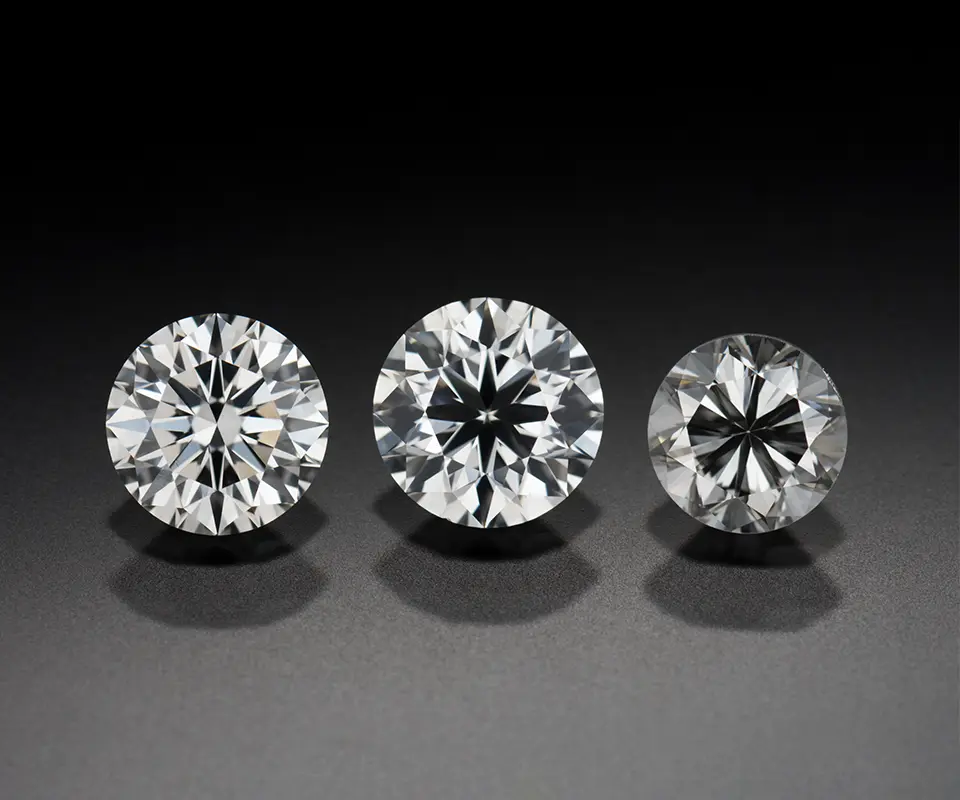
If your diamond is an Excellent or Very Good cut, chances are it displays well in these key features:
- Brightness, often called brilliance, is the effect of all the diamond’s internal and external reflections of white light. This is best observed under diffused lighting (soft, filtered light). Well-cut diamonds are brighter than poorly fashioned ones, all else being equal. Poor polish and symmetry cause brightness and fire to diminish.
- Fire is the red, blue, yellow or orange flashes you see as you rock and tilt a diamond. It occurs when white light traveling through the diamond is dispersed into a rainbow of spectral colors.
- Sparkle is the spots of light that flash when the diamond, you, or the light source moves.
- Contrasting patterns are created from a diamond’s internal and external reflections. The bright and dark areas should have enough contrast to give the pattern a crisp, sharp look, but the pattern should not have large or distractingly dark areas.
- Scintillation is a combination of sparkle and pattern. In an attractive diamond, the reflections should appear fairly even and balanced in size.
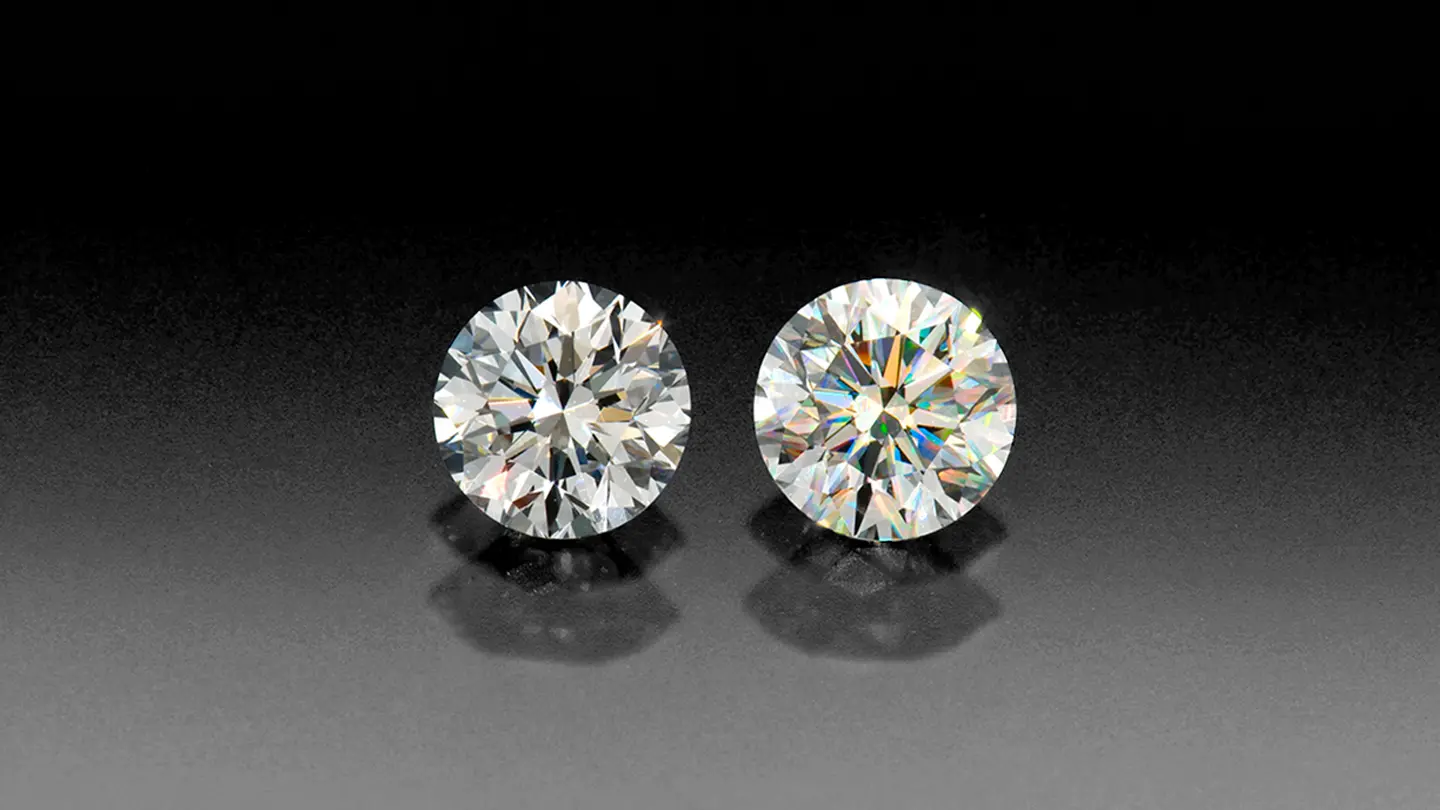
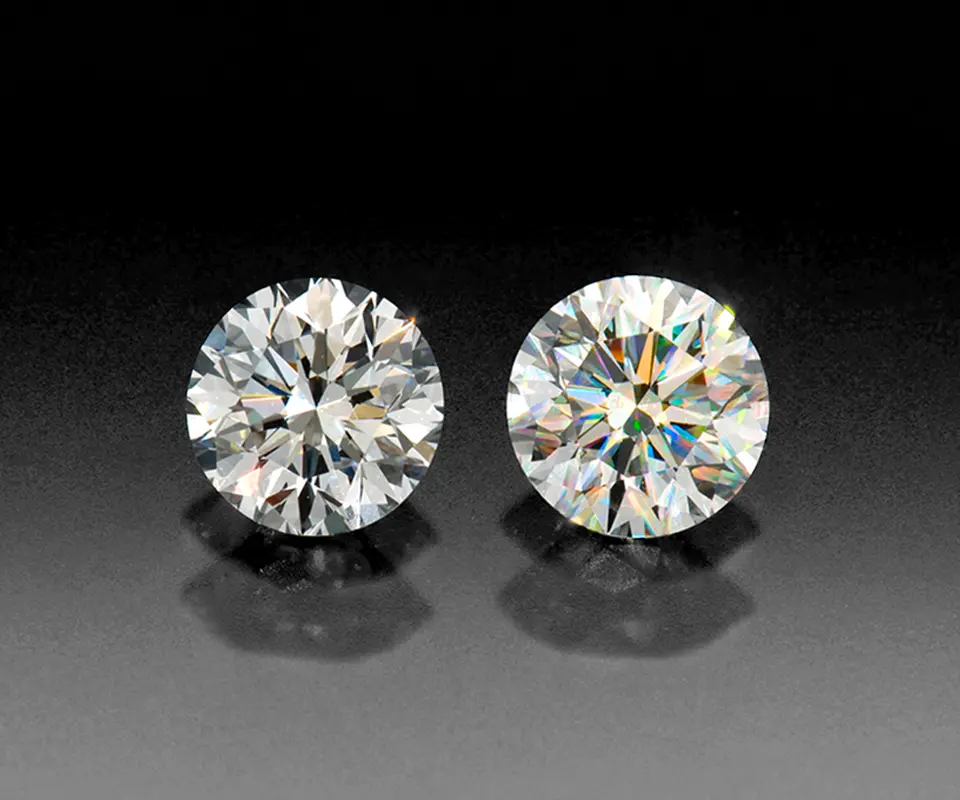
As you shop for your diamond, be aware of the lighting under which you view it, as light has a considerable effect on a diamond’s appearance. The strong spotlighting in jewelry stores can make any diamond appear brilliant and fiery. Make sure to see the diamond in other lighting situations, such as under diffuse office lights or under sunlight.
Besides appearance, take a diamond’s durability into account. Even though it ranks 10 on the Mohs hardness scale, a diamond can still chip and break.
- Avoid diamonds with extremely thin or “knife-edge” girdles, which make them more vulnerable to damage.
- Consider the number, type, and placement of diamond inclusions near the girdle, as they may make the diamond more prone to chipping or breaking.
- Protect the pointed tip of the bottom of the diamond with a protective setting, or make sure your diamond has a culet facet, which helps prevent chipping.
A GIA Diamond Grading Report or Diamond Dossier® is invaluable in helping you select your perfect round brilliant cut diamond. In addition to an objective assessment of the diamond’s cut quality, the reports also evaluate the diamond’s carat weight, color and clarity – vital quality factors (known as the 4Cs) you need to consider when selecting your diamond.
What is the Best Color Rating to Choose for a Round Brilliant Cut Diamond?
Diamond color is graded on a scale of D to Z. D color diamonds are completely colorless and rare and expensive, while Z color diamonds are light yellow or brown. G-H color diamonds are typically considered a good deal—budget-friendly while appearing near colorless.
One thing to keep in mind is that the larger the diamond, the more it shows diamond color. If you’re opting for a diamond three carats or larger, consider going up in color grade if you don’t want the diamond’s color to appear warm.
What color grade you buy also depends on what metal color you intend to set your diamond into. Read more about how the metal color can affect the appearance of your diamond’s color in the upcoming section: Types of Metal Options for Your Diamond Engagement Ring.
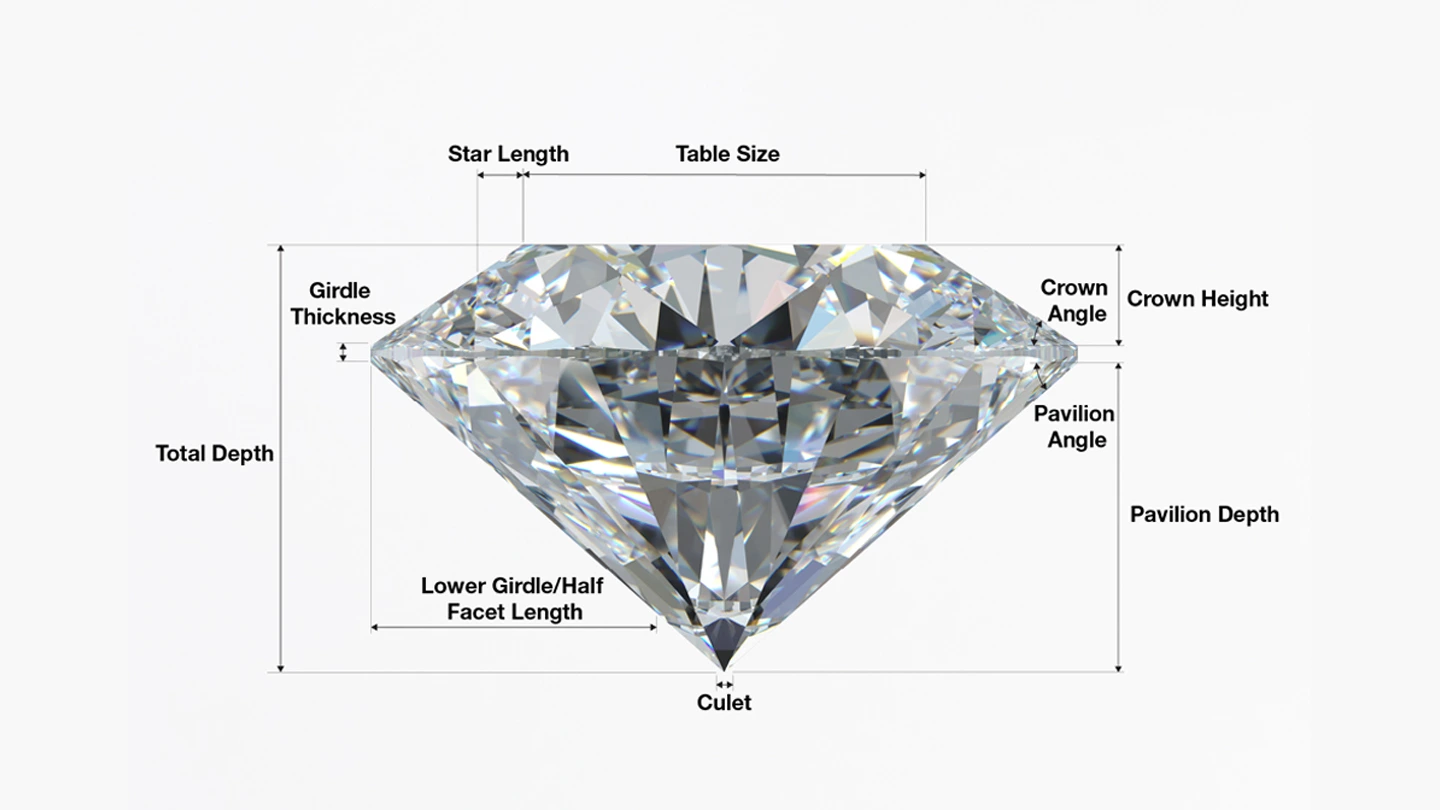
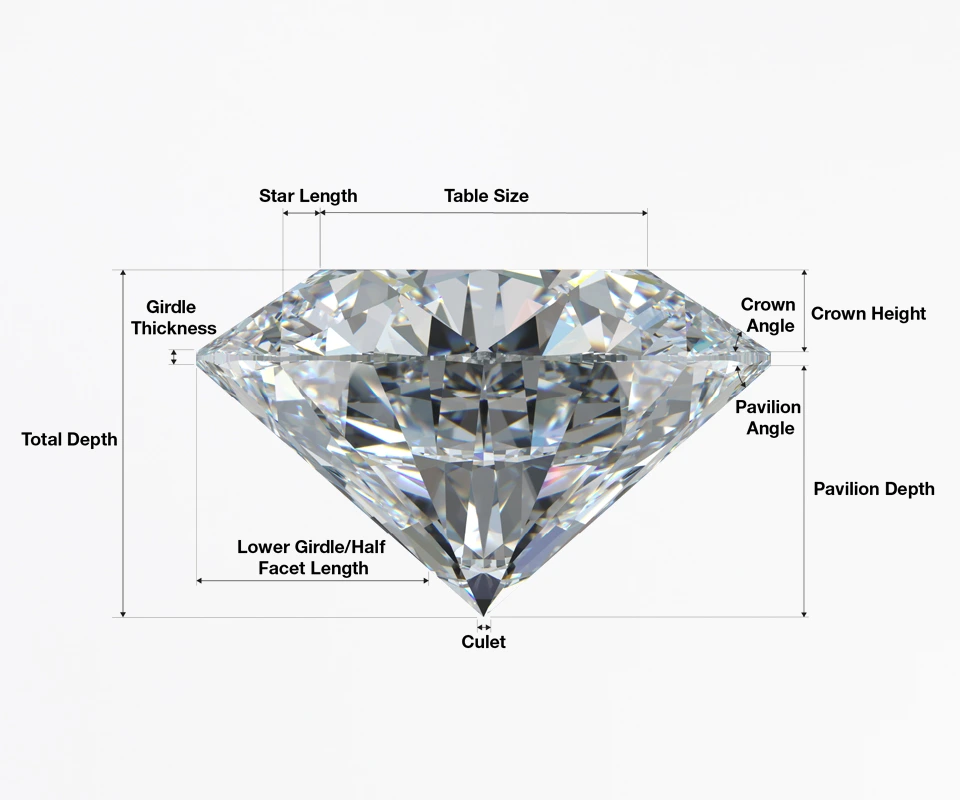
What is the Best Cut Rating to Choose for a Round Brillant Cut Diamond?
Cut is the one quality factor you should never compromise on. Cut grade shows the quality of a diamond’s craftmanship and includes factors such as proportion, symmetry and polish. Cut matters because it determines how a diamond interacts with light, which affects a diamond’s brightness, scintillation (including face-up pattern) and fire.
Excellent cut diamonds have incredible brilliance and fire and have evenly distributed patterns of light and dark. Poor cut diamonds appear dull with very little contrast and sparkle.
Thanks to GIA’s grading system, most round brilliant cut diamonds on the market today have Excellent or Very Good cut grades. These should be the grades you aim for when purchasing a round brilliant diamond.
What is the Best Clarity Rating to Choose for Round Brilliant Cut Diamond?
Diamonds often contain blemishes on their surface and inclusions inside their crystal. These are considered clarity characteristics. GIA grades diamond clarity by evaluating the number, size, relief, nature, and location of these blemishes and inclusions viewed at 10x magnification.
Flawless diamonds have no visible blemishes or inclusions at 10x magnification, while Internally Flawless diamonds have minute blemishes but no inclusions at 10x magnification. Both clarity grades are incredibly rare.
Most diamonds down to VS2 clarity don’t have eye-visible inclusions. Some diamonds with SI1 clarity grade don’t have eye-visible inclusions. That is why VS2 and some SI1 diamonds are considered great deals for the budget-conscious. Keep in mind, however, that the larger the diamond, the more it reveals color and clarity. If you have a diamond three carats or above, consider getting a diamond VS2 or above.
What Carat Weight is Recommended for Round Brilliant Cut Diamonds?
Carat weight affects the size of your diamond, with each carat weighing 0.20 grams. However, a heavier diamond doesn’t always appear larger. Make sure your diamond has Excellent or Very Good cut, or the diamond may hide weight in the girdle (the widest part of the diamond) or the pavilion (the bottom of the diamond), which will make the diamond heavier without appearing larger.
Many people consider a one-carat diamond to be the standard for an engagement ring. However, budget-conscious buyers should avoid “magic sizes” such as 0.50, 1.00, 1.50 carats, where diamonds may jump in price per carat. Instead, buy just below these sizes. A 0.98 carat diamond should appear the same size as a 1.00 carat diamond, but it may cost less per carat.
If you want to save money by buying a smaller diamond but still want your ring to have visual impact, consider buying a cluster ring or a ring with an illusion setting. Halos or diamond pavé on the band will also make the ring appear larger and maximize sparkle.
Read the 9 things you need to know about diamond carat weight before you purchase your engagement ring.
Types of Metal Options for Your Round Diamond Engagement Ring
The color grade you choose might depend on the metal color you want to set your diamond into. Because diamonds reflect the color of their surroundings, diamonds set in warm metals will appear lower in color grade. A warm metal setting will make a D-F diamond appear roughly one color grade lower.
Once you go down the scale and arrive at the K-Z range, however, warm settings are preferred. A white gold or platinum setting will contrast with and emphasize the warm color of a K-Z diamond. If you don’t want the warmth of a K-Z diamond to stand out too much, set the diamond in a warm metal color.
These are the color grades and their recommended metal colors:
- D-F Diamonds: Set in platinum or white gold
- G-J Diamonds: Set in any metal color
- K-Z Diamonds: Set in yellow or rose gold
Learn more about how the metal color of your jewelry setting can affect the appearance of your diamond.
Best Engagement Ring Setting Styles for Round Diamonds
There are many different ring styles and stone settings that complement round diamond engagement rings.
Solitaire settings with a single stone as the focal point of the ring are always popular. Round diamonds are often set with side stones or surrounded by one or more halos to accentuate the center stone. Three-stone and toi et moi rings are also classics. Three-stone rings represent “yesterday, today, and tomorrow” while toi et moi rings, also known as “you and me” rings, represent the coming together of two souls.
1. Solitaire Settings for Round Diamond Engagement Rings
Round brilliant diamonds are often shown off in bold, sleek solitaire settings. This classic design keeps all focus on the diamond, which can be held in place by prongs or a bezel, cathedral or tension setting. Learn more about each type of setting below.
Prong Settings
Prongs act like claws and hold the stone in place from beneath. The number of prongs can subtly affect the look of the ring. Four-prong settings cover up less of the setting and can give round diamonds a somewhat squarer shape, making the ring look more minimalist and modern.
The six-prong setting, introduced over 125 years ago by Tiffany & Co., remains a favorite choice for engagement rings. Six-prong settings accentuate the round shape of the diamond and are more secure, but they cover up slightly more of the diamond.
It is recommended that smaller diamonds are held in place by four prongs while larger diamonds are held in place by six prongs.
Learn the pros and cons of each prong setting style.
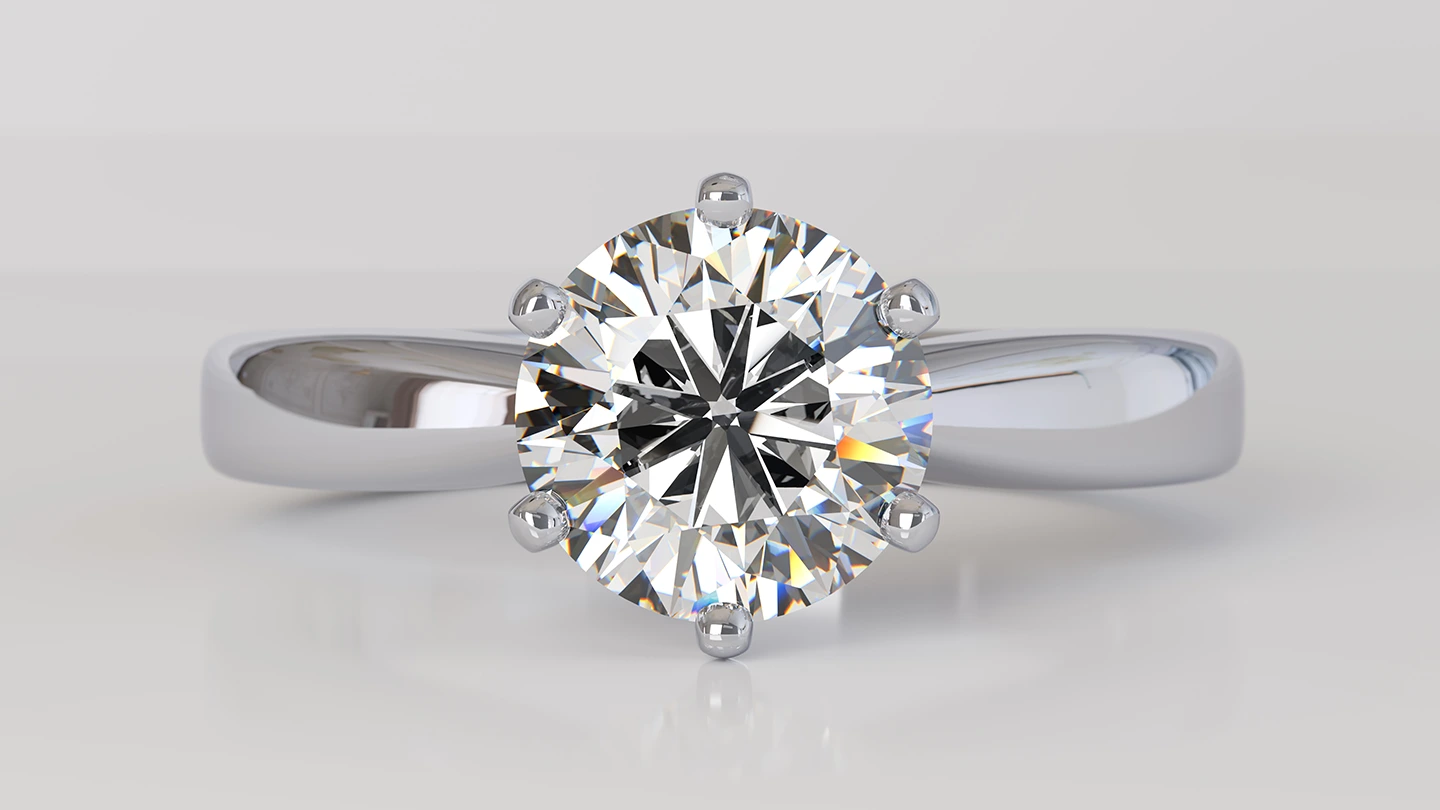
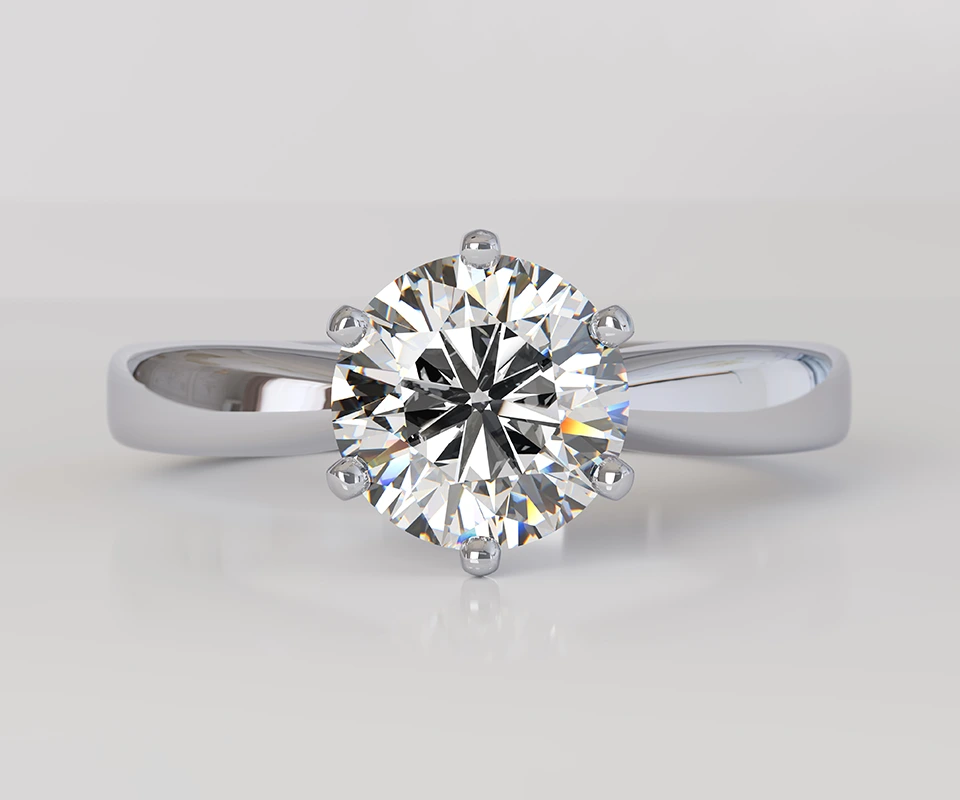
Cathedral Setting
This setting gets its name because it resembles the support arches found in places of worship. It is a prong setting with slopes on either side of the diamond that lift the diamond up, making it more visible, which can make it appear larger. High-profile rings, like those with a cathedral setting, are more likely to scratch or snag on things.
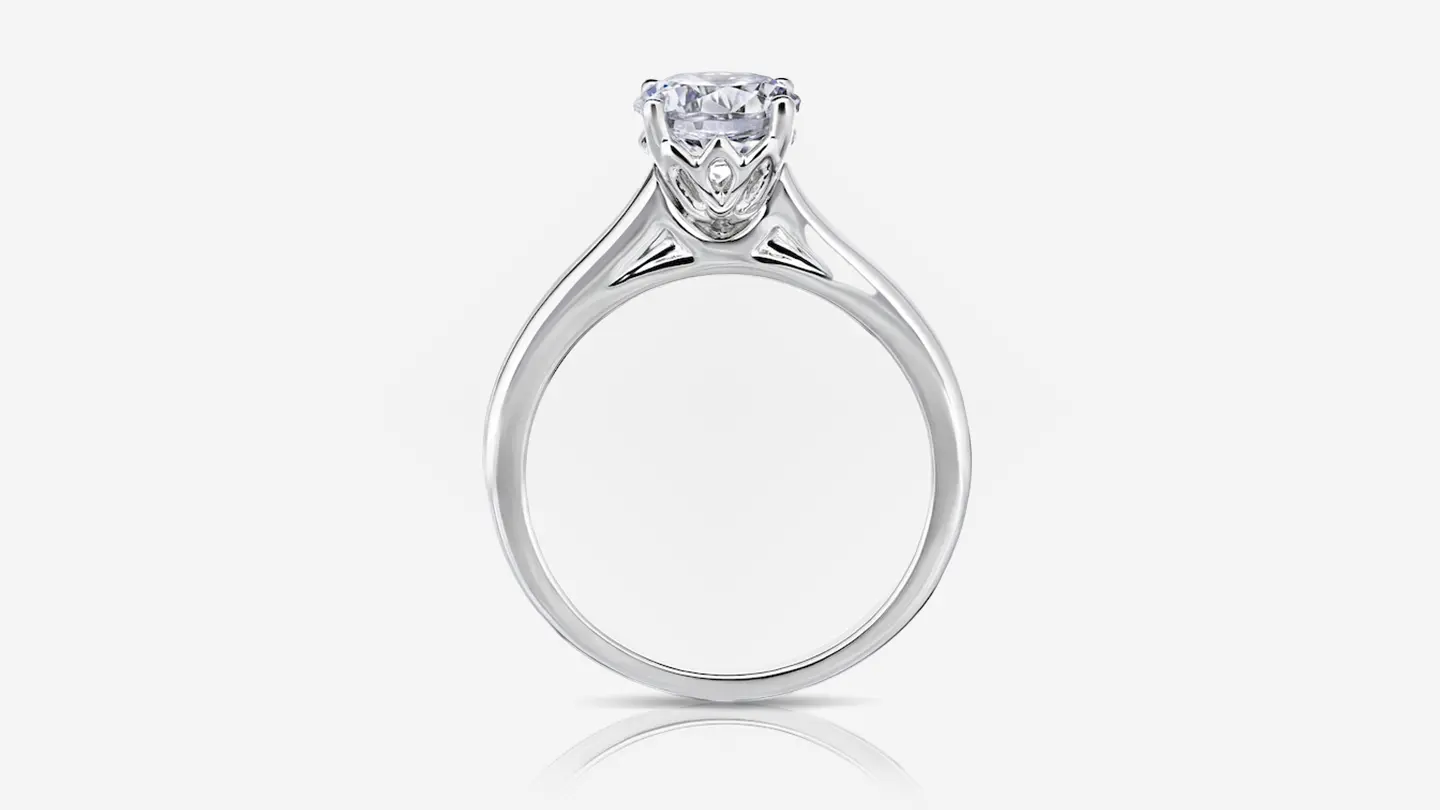
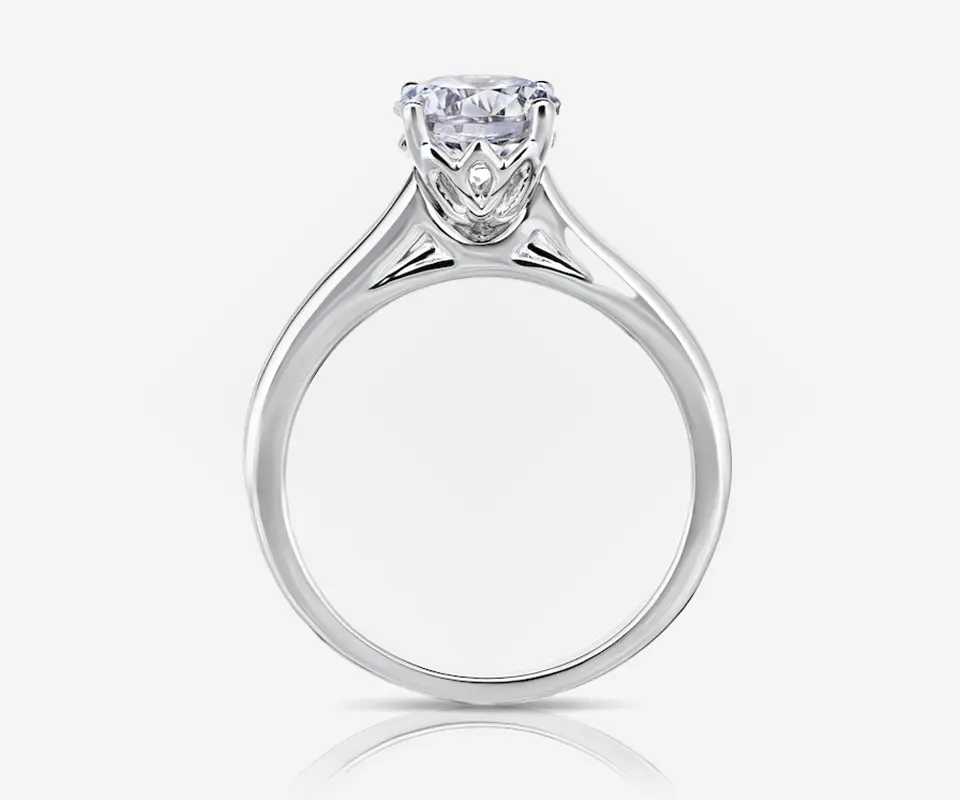
Bezel Setting
For those wanting a smooth, secure setting that won’t snag easily, bezel setting is the way to go. Bezel settings protect the diamond all around so that the diamond is less likely to chip or fall out. It is also a smooth setting with a low profile that is less likely to catch on things.
This setting is ideal for nurses and other professionals who wear gloves or work with their hands. These settings cover up the sides of the diamond, however, while prong settings do not.
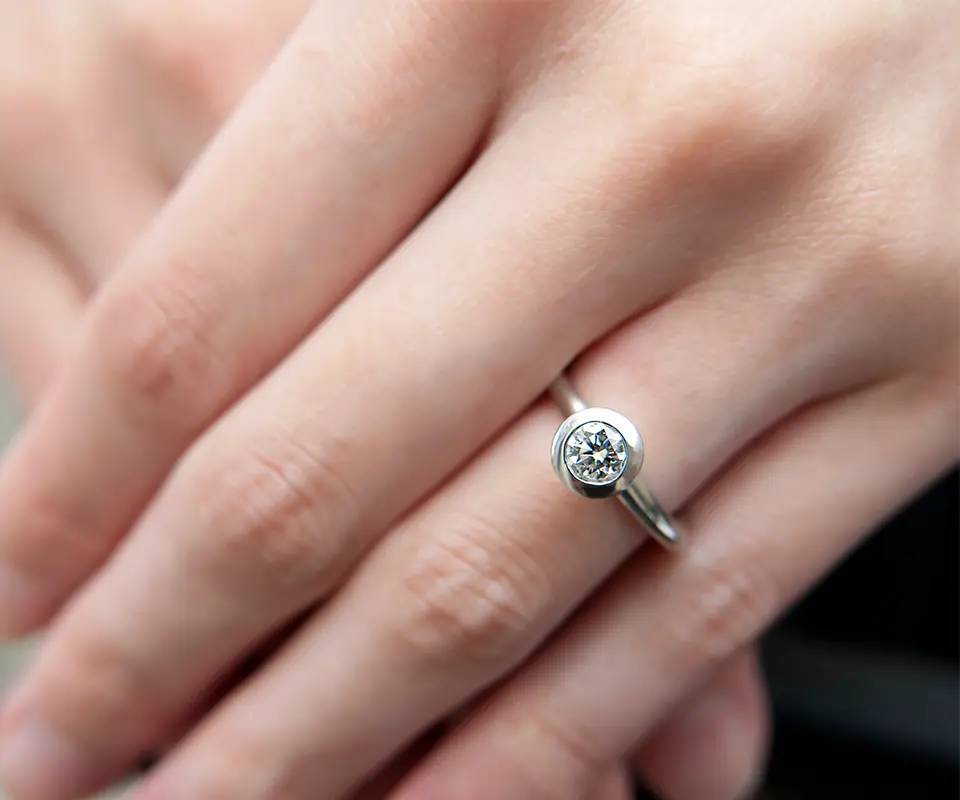
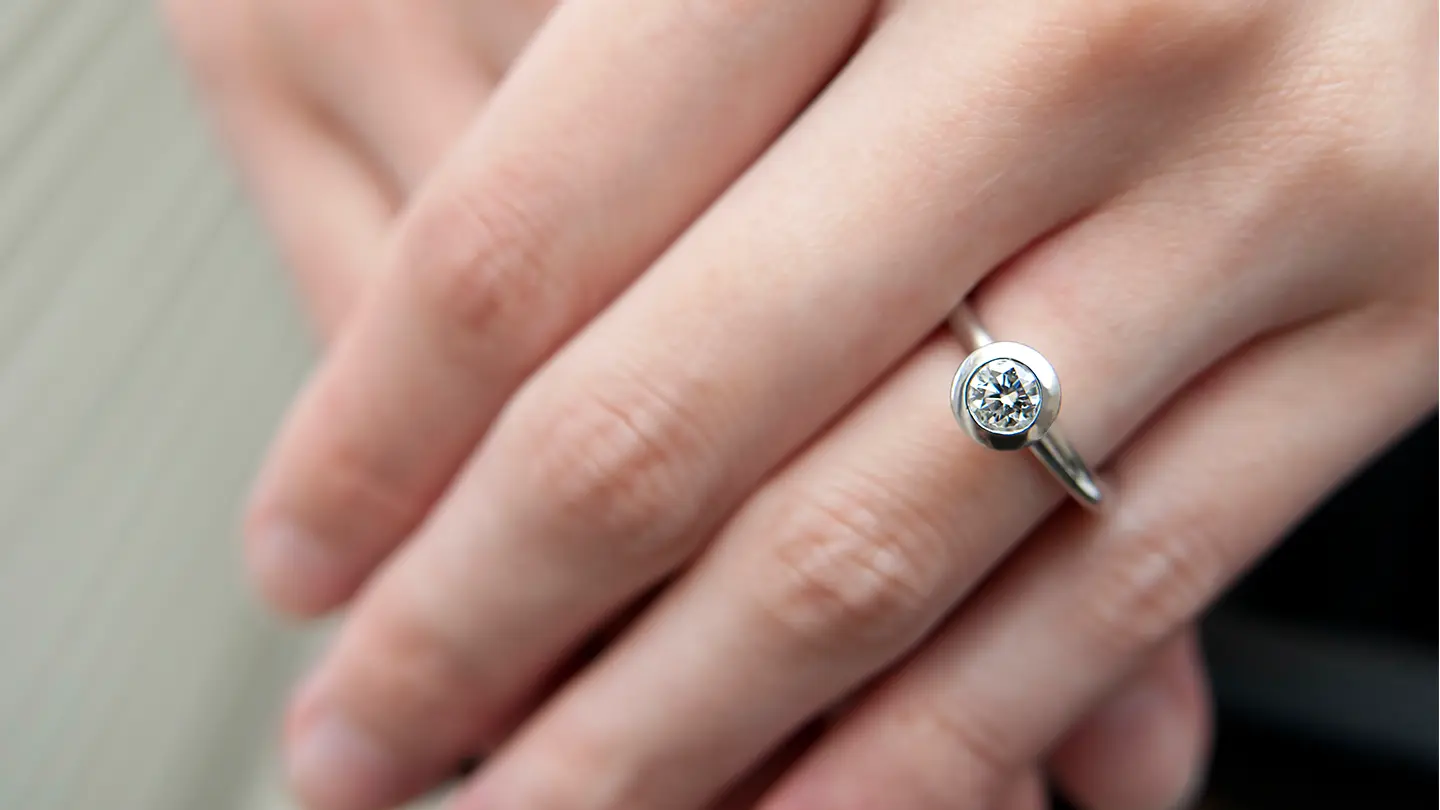
Tension setting
In a tension setting, the diamond is held in place by pressure from two opposing pieces of platinum or karat gold which creates the illusion that the stone is floating. This is a unique and modern setting that allows the diamond to be cleaned easily because there is no metal below it.
These types of rings can be expensive to resize due to the precise nature of the setting. The thick metal holding the two sides of the diamond in place can also make small diamonds appear even smaller.
There is also a slim possibility that if an outside force strikes the ring hard enough to loosen the setting, the stone could fall out.
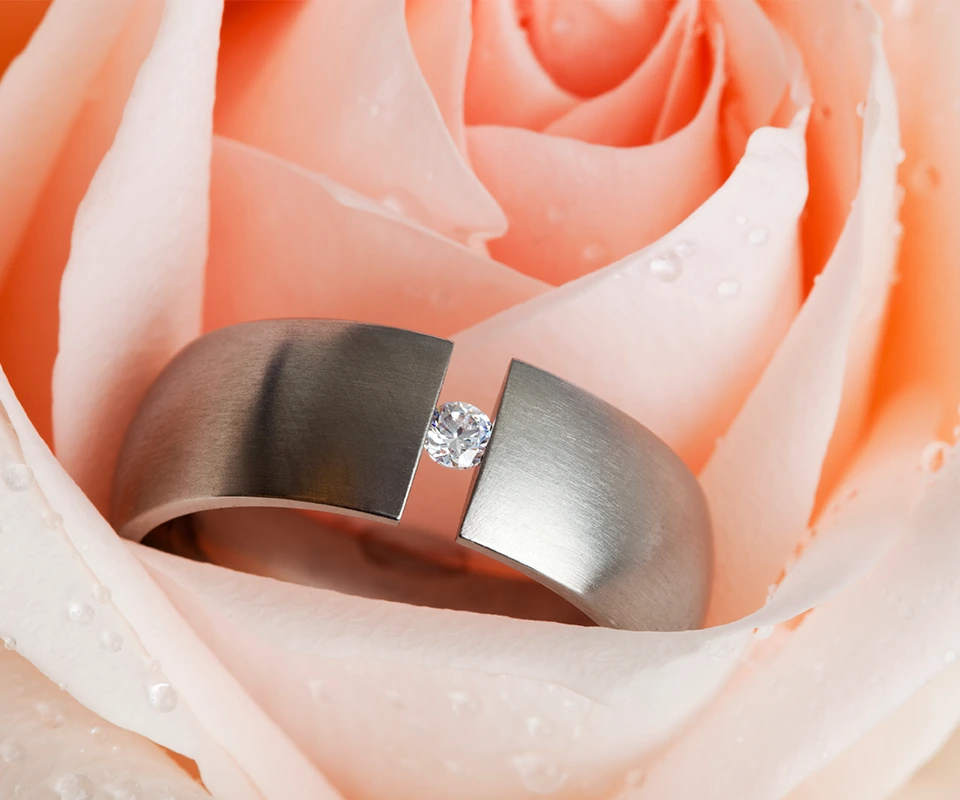
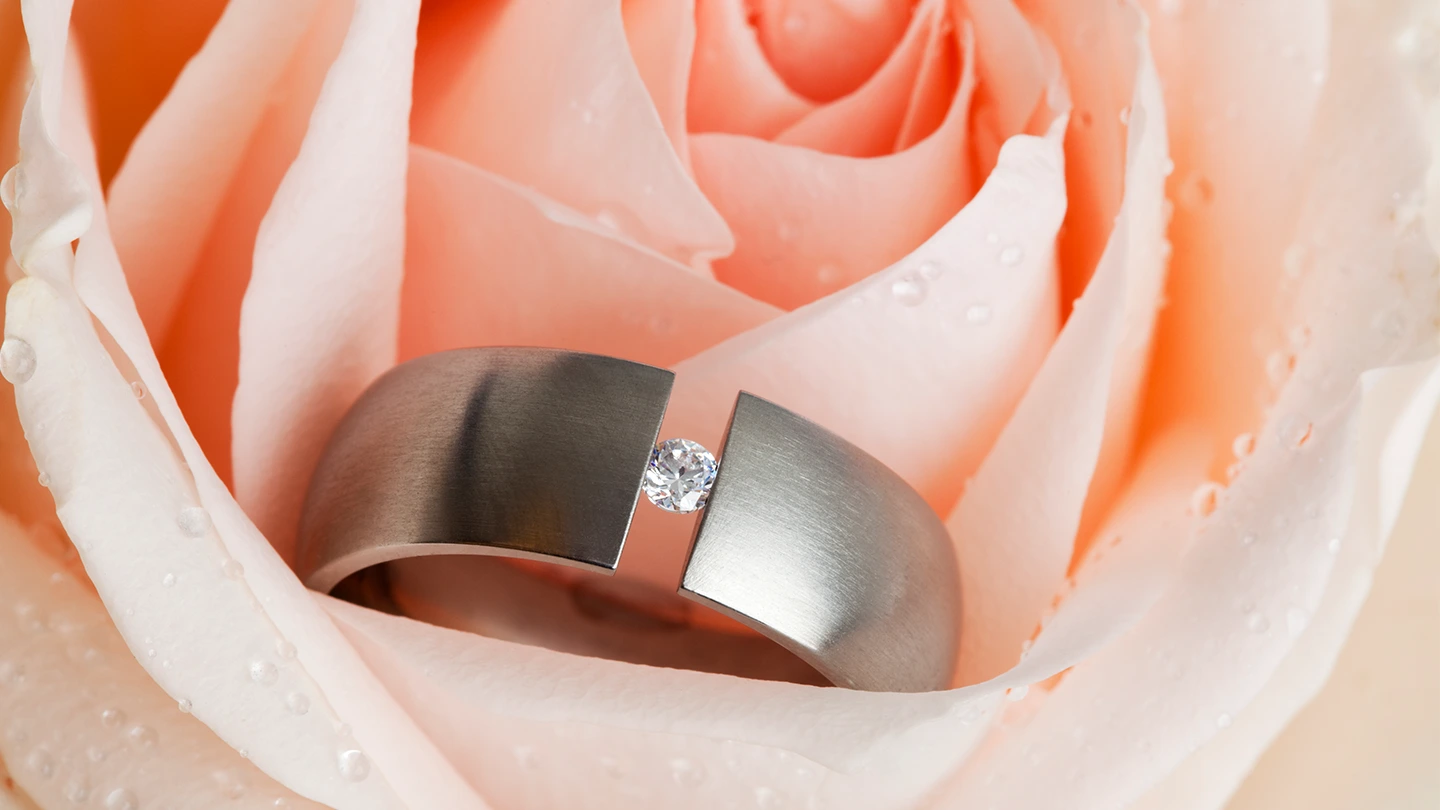
2. Side Stone Settings for Round Diamond Engagement Rings
Side stones are a great way to add sparkle or color to your engagement ring. You can choose between different stone shapes, like round, pear, baguette or shield cut, or between different types of stones, including diamonds or colored stones. Side stones are also a great way to incorporate birthstones and other meaningful gemstones to your ring.
Pavé setting
A pavé setting can encircle the round diamond center stone like a halo (also known as a halo setting), extend along the band, or both. Pavé diamonds are an affordable way to add glamor, style and sparkle to your ring.
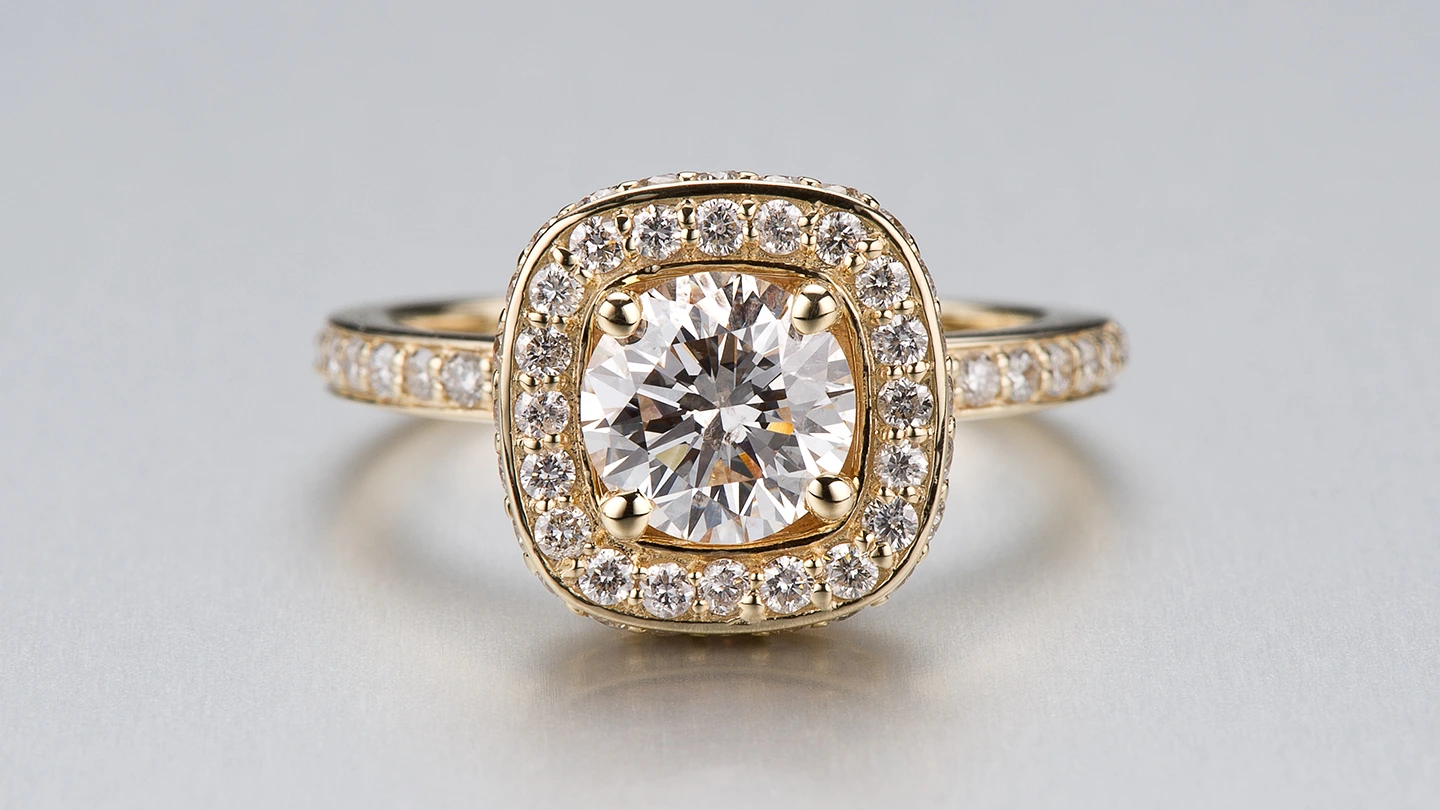
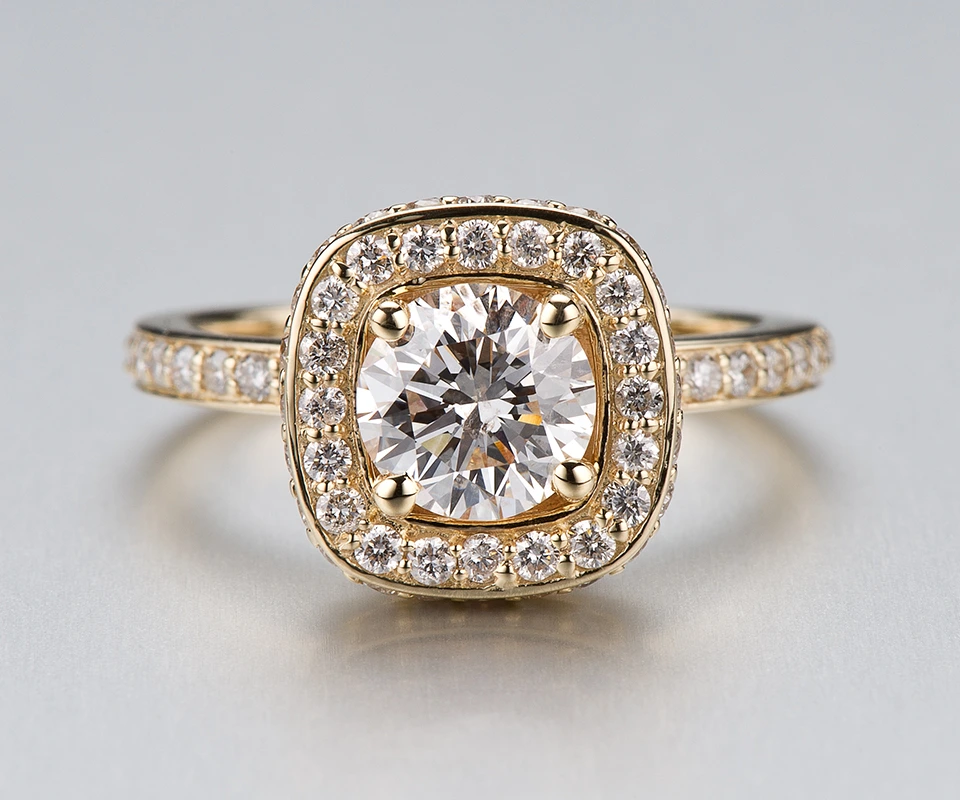
Channel setting
In a channel setting, a groove is created to hold side stones that are set edge-to-edge in a row. Round, baguette and princess cut diamonds are often channel set and make for striking bands. The gemstones are well protected, making this type of setting style a great choice for daily wear.
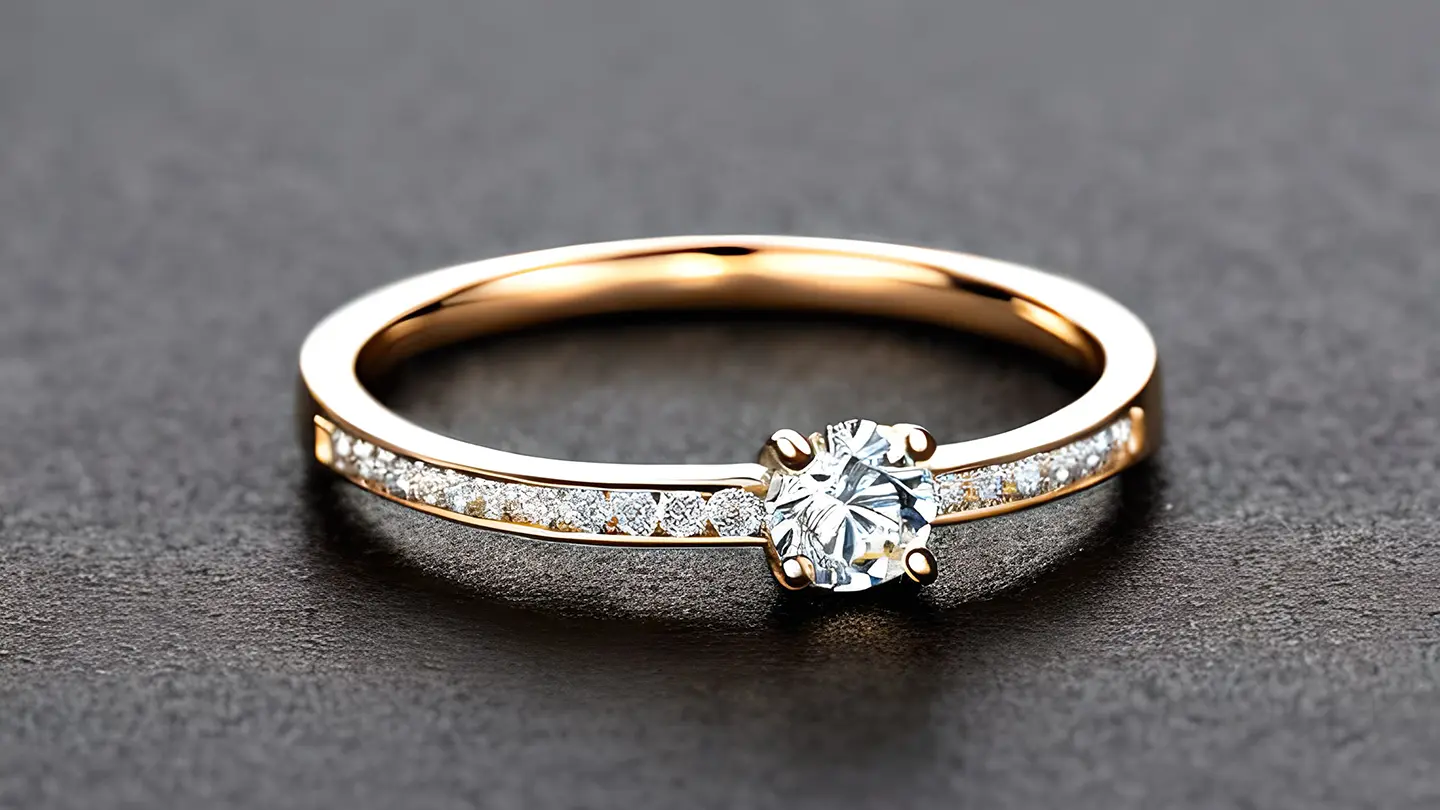
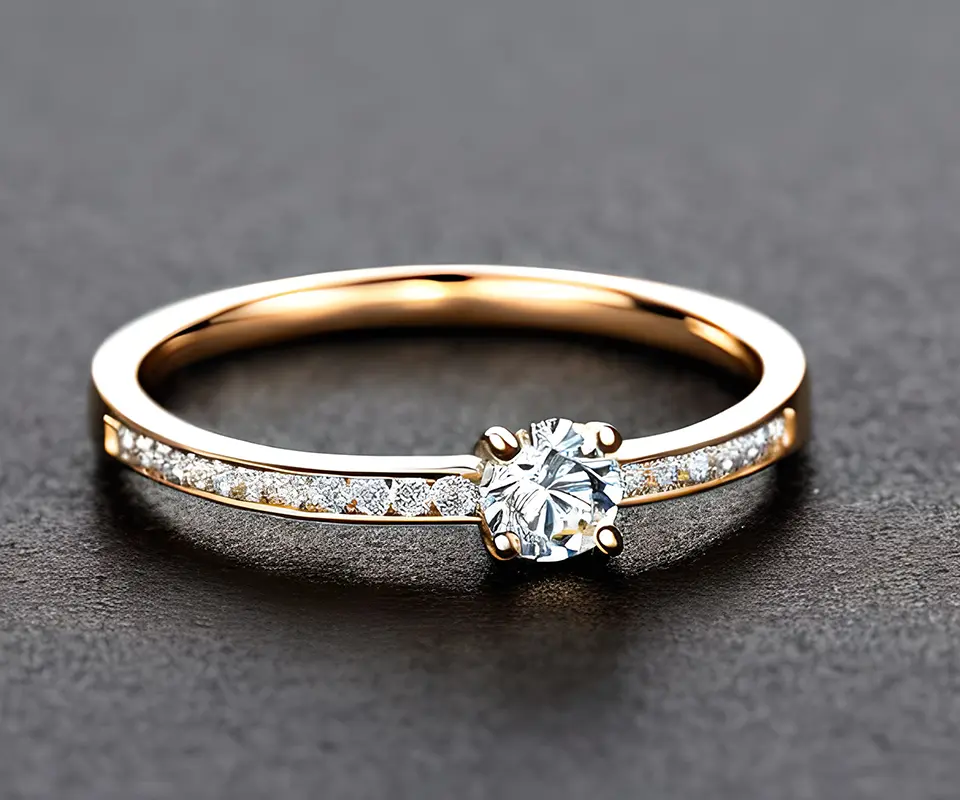
Find Your Perfect Engagement Ring
Whichever setting style you choose, a round brilliant cut diamond is a timeless choice for an engagement ring and can be the perfect expression of your love.
Ready to do some shopping? Why not brush up on these common engagement ring terms to help you communicate your desires to your jeweler? Or learn how to build your own engagement ring for a one-of-a-kind style that fits you and your unique love story.
